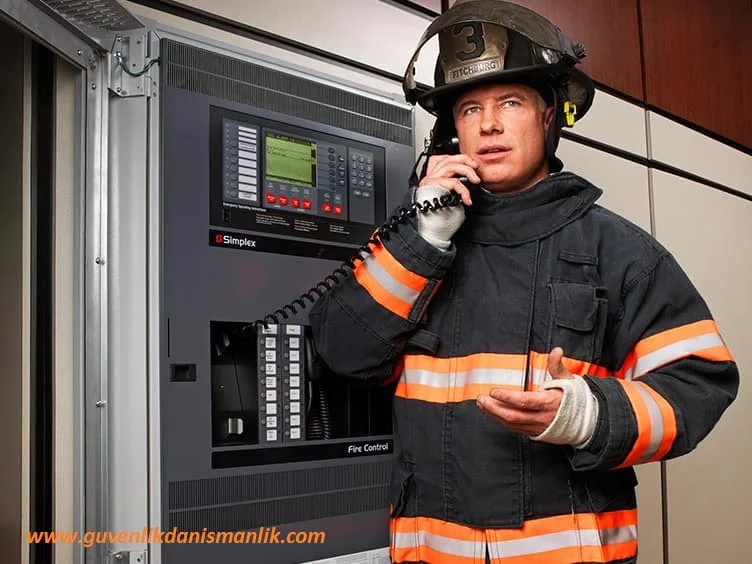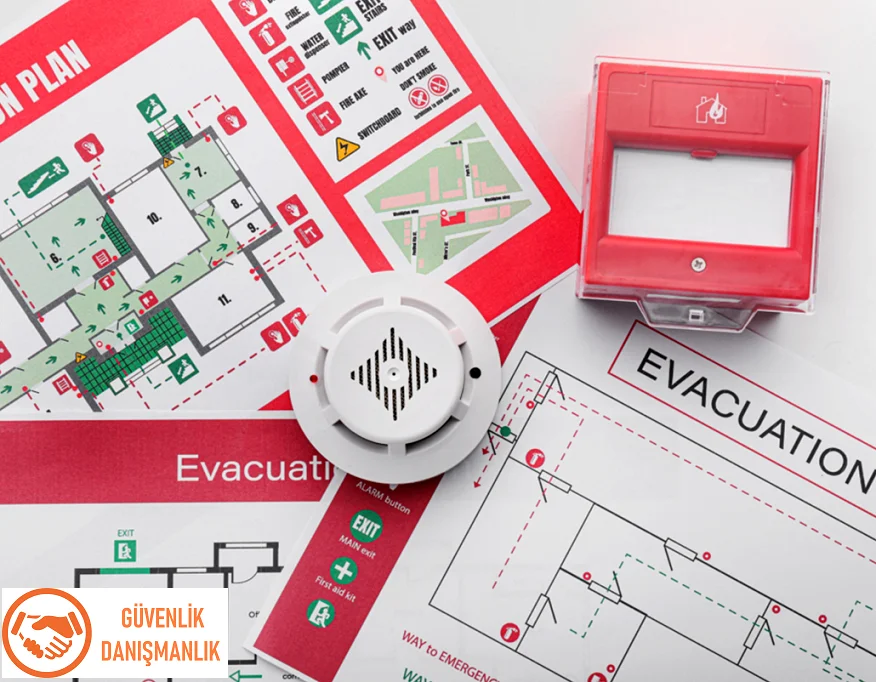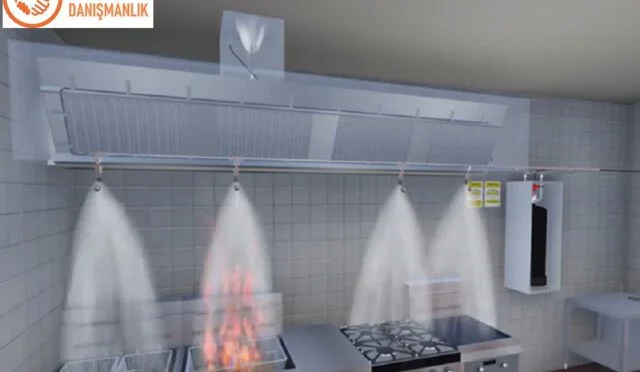With addressable fire alarm systems, necessary control functions can be easily performed automatically in a building during a fire. This enables early intervention in the fire, safe evacuation of the building, and prevention of the fire from spreading. Therefore, specific fire scenarios are prepared for medium and large-scale fire projects and the fire detection panel is programmed accordingly. During a fire, the fire detection and alarm panel will be able to perform all of these functions on its own.
Now, what are these fire emergency scenarios? Let’s examine the scenarios in fire alarm systems.
-
To ensure that the emergency announcement system in the building is activated automatically in case of fire and that people in the building are informed and evacuated safely.
- In case of fire, all elevators in the building should descend to the ground floor and their doors should be opened. Necessary control should be carried out by the fire panel, and the fire panel program should be designed accordingly.
- All doors controlled by the access control system should be released in case of fire. This will enable people to easily evacuate the building from wherever they are. The fire panel program should be designed accordingly, and the system should be designed accordingly.
- Fire doors that are held open by door holders should close automatically, and necessary fire zones should be created.
- The pressure fans in the automatic pressurization system of the fire stairs and elevator buckets should be activated to pressurize these areas and prevent smoke from entering.
- All energy sources except emergency power should be disconnected from the building.
- If there are turnstile systems at the entrances and exits of the building, all turnstile arms should drop to allow quick escape from the building.
- The air conditioning units that provide fresh air to the building’s interior should be shut off automatically, and the oxygen level should be reduced to prevent the fire from spreading.
-
The smoke exhaust system should be activated, and smoke exhaust dampers should be opened to evacuate the smoke inside.

*If there are access control systems such as barrier gates in the parking lots of the building, these systems should be automatically opened and made available for the escape of vehicles.
*Fire dampers in the building should be closed automatically.
*The fire detection system should monitor the Flow Switches and Cut-off valves of the Sprinkler system located on each floor.
These and many other systems are monitored and controlled by the fire detection system panel. The programming of all these systems is also done by the fire detection system.
But should these fire scenarios be applied every time an alarm comes from a fire detector? Of course not, even the most reliable systems have the risk of false alarms. In case of a false alarm, implementing this scenario and evacuating the building can cause serious time and labor losses. Especially in buildings where thousands of people work, the importance of this issue can be better understood.
To prevent this, the confirmation of the alarm should be obtained from two detectors in the same area. When an alarm is triggered from a fire detector, a pre-alarm should be displayed, and the system should be checked. If an alarm is triggered from the second detector, a fire alarm should be displayed on the panel, and a certain time should be given to confirm the alarm. This time should be defined according to the time it takes for a person to reach the farthest point of the building without using an elevator. This time can be between 120-240 seconds. Assigning too much time may cause the fire to spread, and assigning too little time may cause the scenarios to be implemented without visually confirming the fire.

After the designated time, the personnel checks the area where the fire alarm was triggered and if there is a real fire, the relevant authorities are informed. The fire alarm system is activated and the scenarios begin to work, and the building is evacuated. If the alarm is a false alarm after visual confirmation, the authorities are informed and the personnel at the fire panel cancel the alarm before the designated time expires, preventing the scenarios from being activated unnecessarily.
In fire alarm systems, the scenarios are generally applied differently in day and night modes. In the night mode, the alarm confirmation time we mentioned earlier is not applied, and the fire scenario is activated directly. In the day mode, an initial alarm must be applied. The working principle of a fire detection system in a building is fundamentally as we have described.





